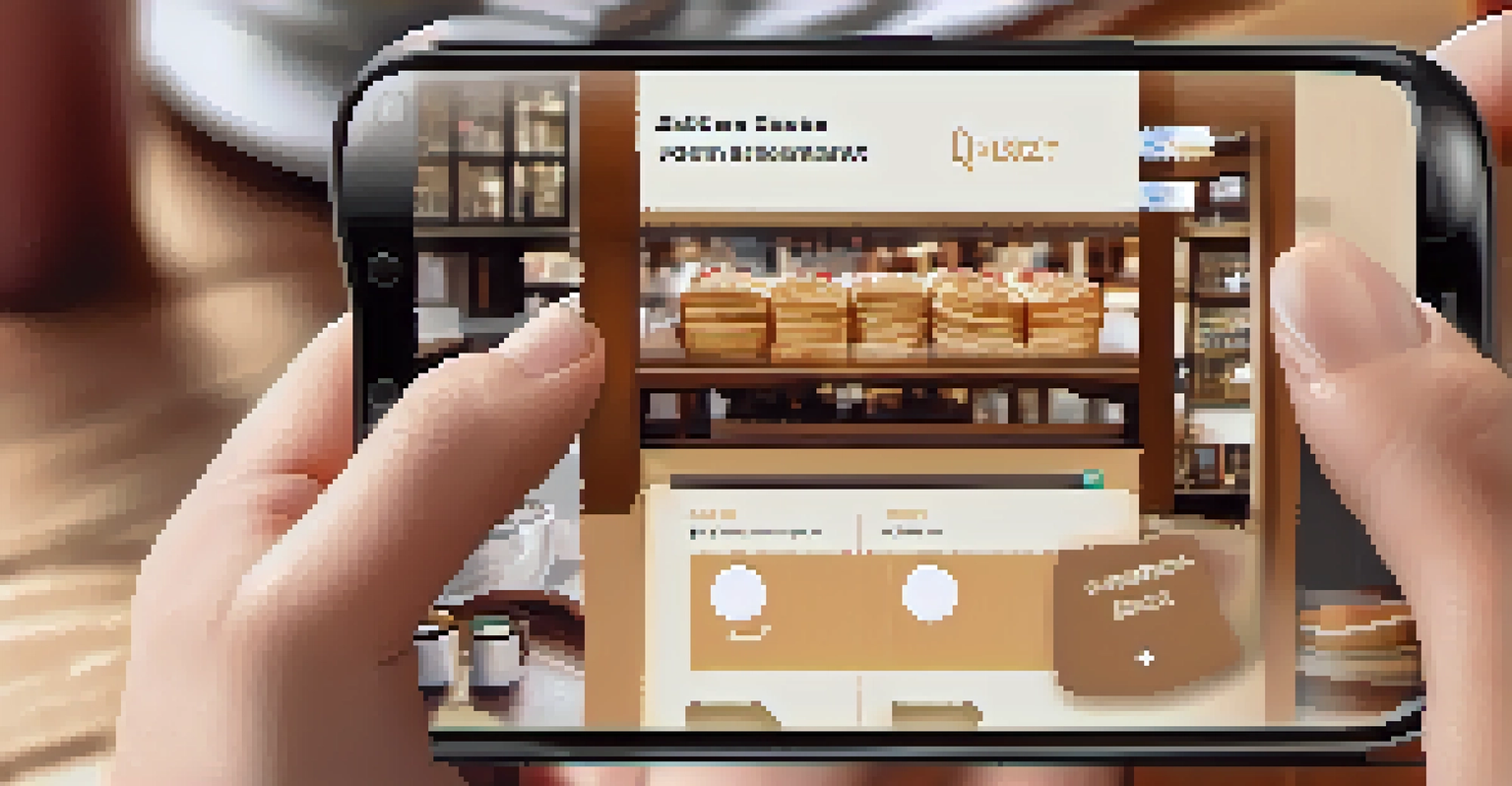Utilizing Mobile Marketing for Targeted Consumer Engagement

Understanding the Power of Mobile Marketing
In today's digital landscape, mobile marketing has become a cornerstone for businesses aiming to connect with consumers. With over 50% of web traffic coming from mobile devices, brands can no longer afford to overlook this dynamic channel. It’s not just about reaching users; it’s about engaging them in a way that feels personal and relevant.
Mobile marketing is not just about reaching people, it's about reaching the right people with the right message at the right time.
Mobile marketing encompasses a variety of strategies, including SMS campaigns, mobile apps, and social media engagement. By leveraging these tools, businesses can create tailored experiences that resonate with their audience. Think of it as having a direct line of communication with your customers, allowing for real-time interaction and feedback.
Moreover, the immediacy of mobile marketing allows brands to respond quickly to trends and consumer needs. Imagine being able to notify a local audience about a flash sale just minutes after a popular event ends. This agility not only drives engagement but also fosters a sense of community between the brand and its consumers.
Identifying Your Target Audience
The first step in any successful mobile marketing strategy is understanding who your target audience is. This involves analyzing data such as demographics, interests, and behaviors to create a detailed customer profile. Knowing your audience well enables you to tailor your messaging and choose the right platforms for engagement.

For example, if you're targeting young adults, platforms like Instagram or TikTok might be more effective than traditional SMS campaigns. On the other hand, older consumers may respond better to email or push notifications. By aligning your strategy with where your audience spends their time, you can enhance engagement significantly.
Mobile Marketing Engagement Strategies
Utilizing SMS, apps, and social media enables brands to create personalized and engaging experiences for consumers.
Additionally, consider segmenting your audience into different groups based on their preferences and behaviors. Just like a shop owner might place certain products in eye-catching displays to attract specific customers, personalized content can guide your mobile marketing efforts toward higher engagement and conversion rates.
Crafting Engaging Mobile Content
Content is king in the mobile marketing realm, but it’s all about creating engaging content that captures attention quickly. Given the limited screen space and shorter attention spans, your messaging should be concise and impactful. Use captivating visuals, catchy headlines, and clear calls-to-action to entice users to engage.
The best marketing doesn’t feel like marketing.
Consider using interactive content such as polls, quizzes, or videos to enhance engagement. These formats invite users to participate rather than just passively consume information. For instance, a brand could create a fun quiz related to their products, encouraging users to share their results on social media.
Remember, the goal is to create a two-way conversation, not just a one-sided broadcast. When consumers feel involved, they are more likely to engage with your brand repeatedly, turning casual browsers into loyal customers.
Leveraging Social Media for Mobile Marketing
Social media is a powerful tool for mobile marketing, offering brands the opportunity to connect with their audience in real-time. Platforms like Facebook, Instagram, and Twitter are not just for sharing; they are venues for engagement. By utilizing social media, brands can create conversations around their products and services.
For example, a clothing brand might use Instagram Stories to showcase new arrivals while encouraging followers to vote on their favorites. This interaction not only drives engagement but also gives consumers a sense of ownership over the brand. When people feel like they have a voice, they are more likely to become loyal followers.
Importance of Target Audience Insights
Understanding your audience's demographics and preferences is key to tailoring effective mobile marketing campaigns.
Moreover, social media allows for targeted advertising, meaning your content can reach the right audience at the right time. By analyzing engagement data, brands can refine their strategies to ensure maximum impact, making social media an invaluable asset in any mobile marketing toolkit.
Utilizing SMS Marketing for Direct Engagement
SMS marketing is one of the most direct forms of communication available to brands today. With a staggering open rate of 98%, text messages provide an immediate way to reach consumers. By sending personalized messages directly to their phones, brands can create a sense of urgency and drive engagement effectively.
For instance, a local restaurant might send out a text to loyal customers about a special offer or an upcoming event. This not only encourages foot traffic but also makes customers feel valued and appreciated. The key is to ensure that messages are relevant and not overly frequent to avoid overwhelming your audience.
Additionally, incorporating opt-in features allows consumers to choose to receive messages, creating a more positive experience. When customers feel in control, they are more likely to engage with your brand and take action based on your messages.
Personalizing the Mobile Experience
Personalization is no longer just a trend; it’s an expectation among consumers. By using data to tailor mobile marketing efforts, brands can create a more meaningful experience for their users. This could mean recommending products based on past purchases or sending birthday discounts to loyal customers.
For example, an online retailer might send personalized product suggestions through their app, making shopping feel more customized. When consumers receive messages that resonate with their interests, they are more likely to engage and convert. Think of it as having a personal shopper who knows your style and preferences.
Measuring Mobile Marketing Success
Regularly analyzing engagement metrics helps brands refine their mobile strategies for better results.
Additionally, personalization can extend beyond product recommendations to include location-based offers. If a customer is near your store, a timely push notification about a sale can encourage them to visit. This approach not only increases engagement but also enhances customer loyalty.
Measuring Success in Mobile Marketing
To truly understand the effectiveness of your mobile marketing efforts, measuring success is crucial. Key performance indicators (KPIs) such as engagement rates, click-through rates, and conversion rates can provide valuable insights into what works and what doesn’t. Regular analysis of these metrics helps brands refine their strategies over time.
For instance, if you notice that SMS campaigns have higher engagement than social media posts, it may be worth reallocating resources to focus more on text messaging. Additionally, A/B testing different messages or offers can help determine what resonates best with your audience.

Ultimately, the goal is to create a feedback loop that informs your marketing strategy. By continually measuring and adjusting your approach, you can ensure that your mobile marketing efforts remain effective and relevant in an ever-changing digital landscape.